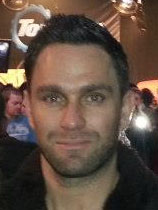How does neural machine translation work?
Let`s start by looking at how all three technologies work at different stages of the translation process, as well as the methods that are used in each case.
Next, we will get acquainted with some examples and compare what each of the technologies does in order to produce the most correct translation

In this publication of our step-by-step series, we will explain how neural machine translation works and compare it with other methods: rule-based translation technology and frame translation technology (PBMT, the most popular subset of which is statistical machine translation - SMT).
The research results obtained by Neural Machine Translation are amazing when it comes to decoding the neural network. It seems that the network actually "understands" the sentence when it translates it. In this article, we will analyze the issue of the semantic approach that neural networks use for translation.
Stages of the translation process
Let`s start by looking at how all three technologies work at different stages of the translation process, as well as the methods that are used in each case. Next, we will get acquainted with some examples and compare what each of the technologies does in order to produce the most correct translation like the https://www.conveythis.com//, for instance.
Very simple, but still useful information about the process of any type of automatic translation is the following triangle, which was formulated by the French researcher Bernard Vauquois in 1968.
This triangle depicts the process of converting the source sentence to the target one in three different ways.
Bernard Vauquois model
The left side of the triangle characterizes the source language, while the right side characterizes the target language. The difference in levels within the triangle represents the depth of the process of parsing the original sentence, such as syntactic or semantic. We now know that we cannot do parsing or semantic analysis separately, but the theory is that we can go deeper in each direction. The first red arrow indicates the analysis of a sentence in the original language. From the sentence given to us, which is just a sequence of words, we can get an idea of the internal structure and the degree of possible depth of analysis.
For example (see Wiki), on one level, we can determine the parts of speech of each word (noun, verb, etc.), and on the other - the interaction between them. For example, which word or phrase is the subject.

